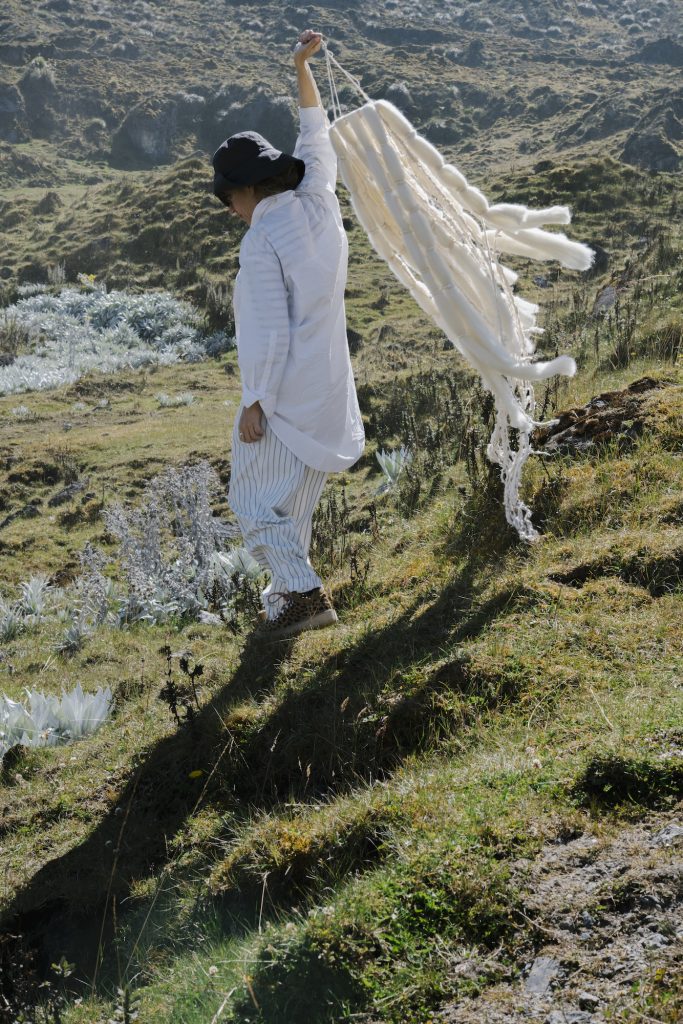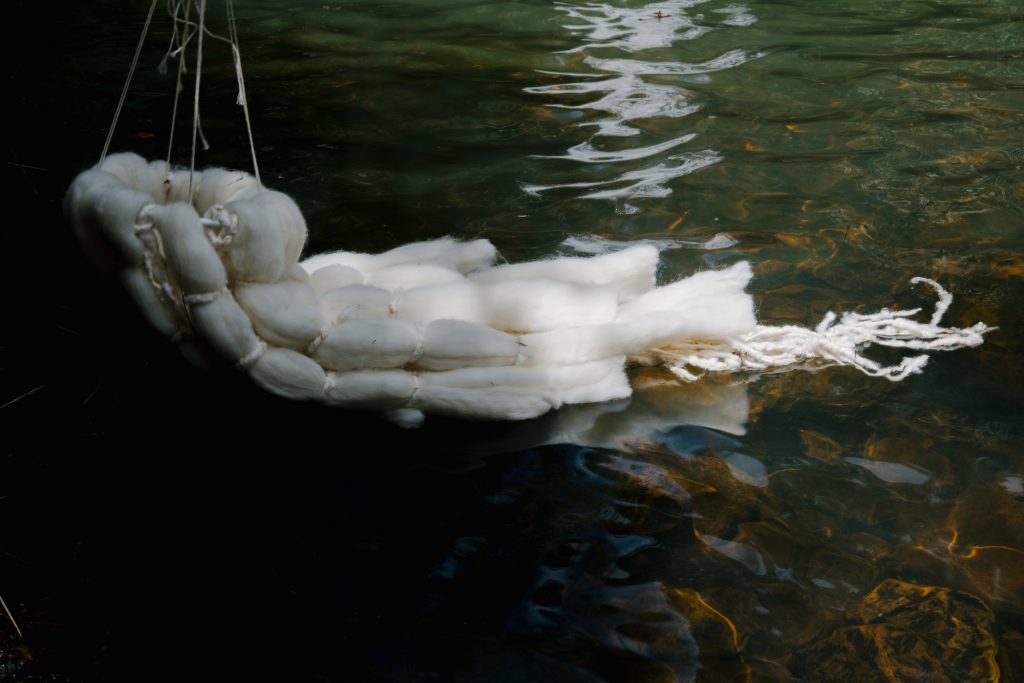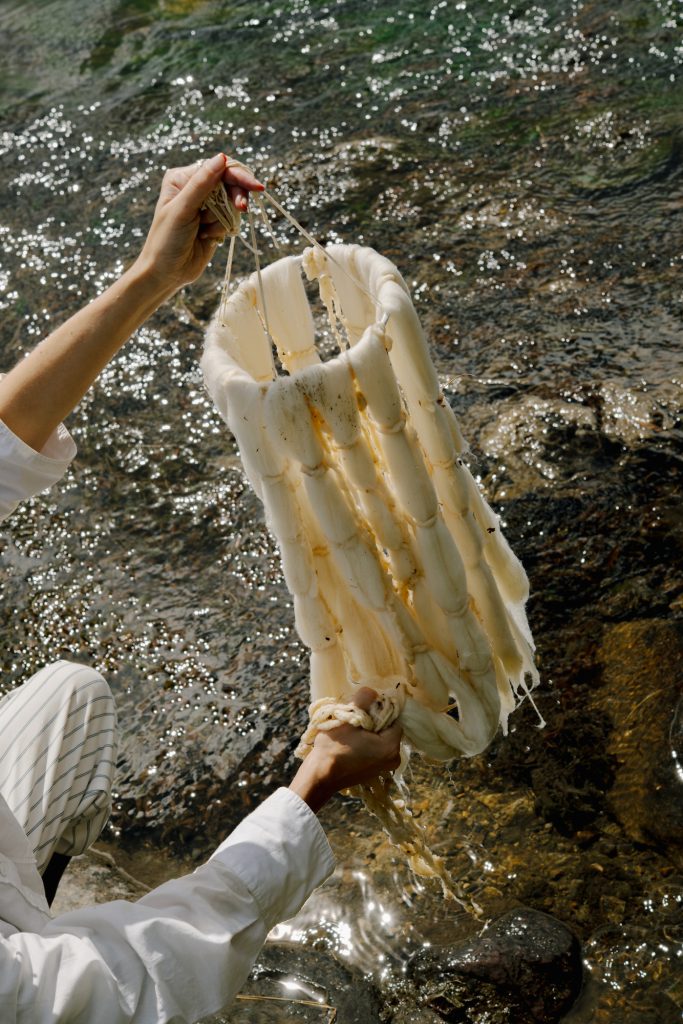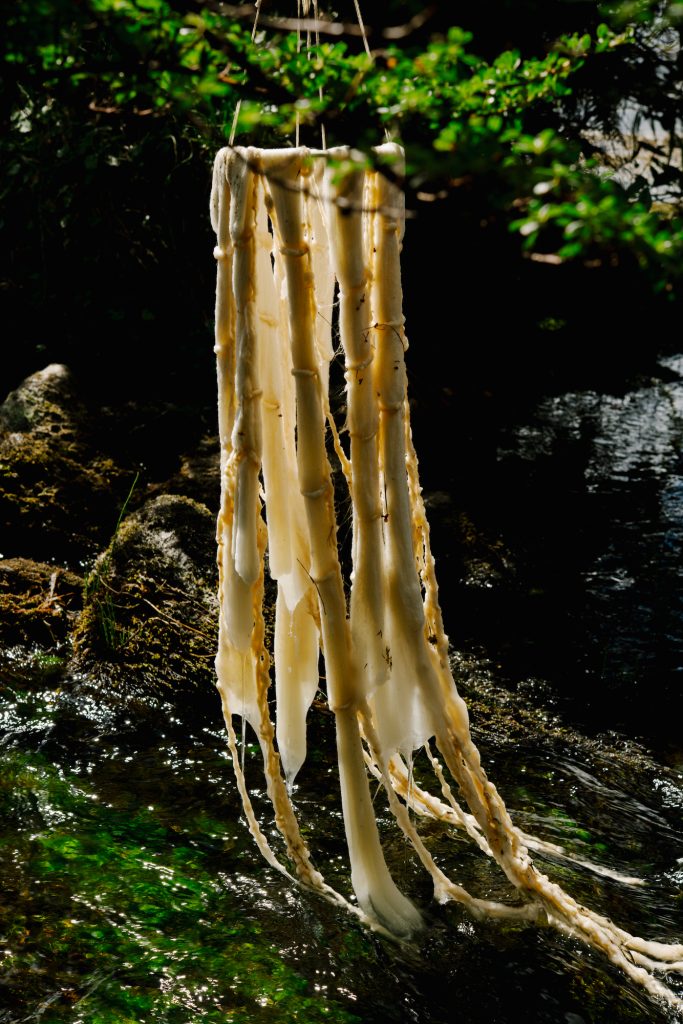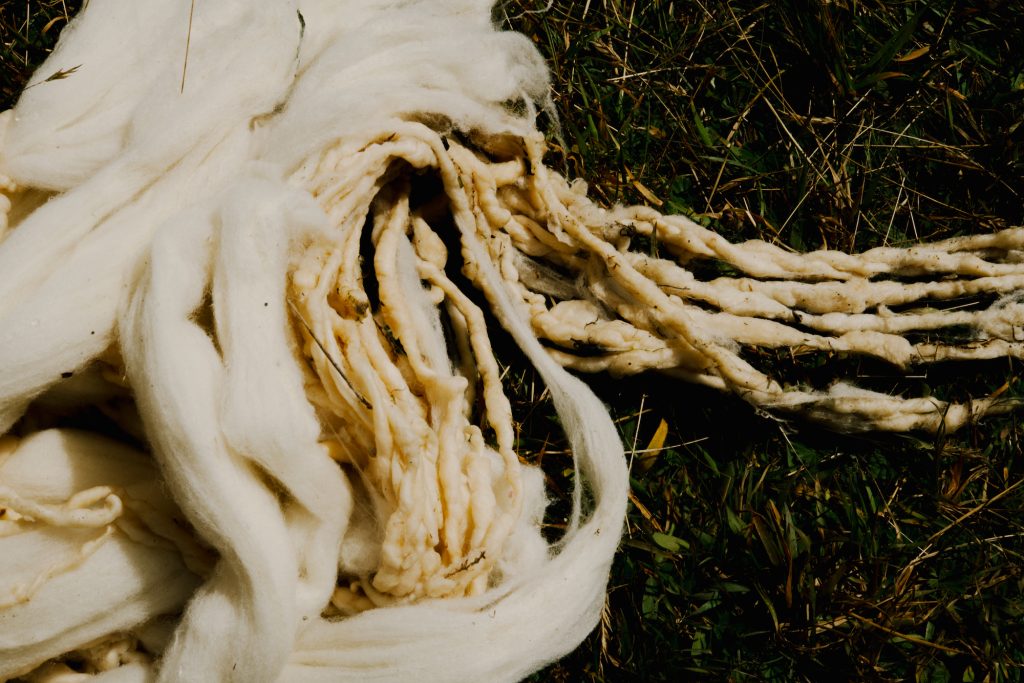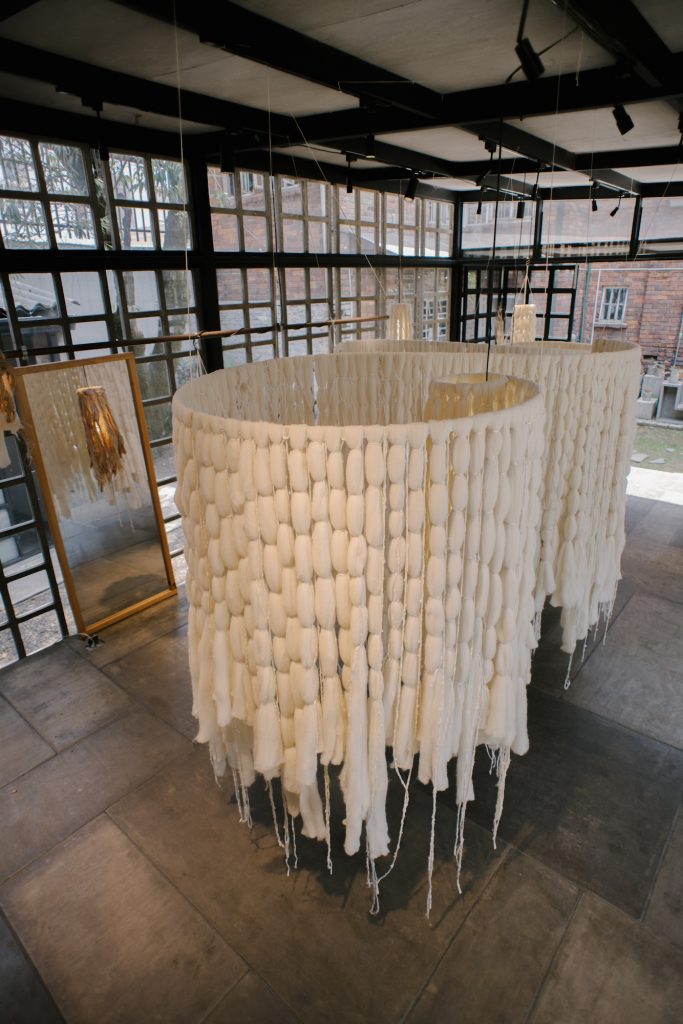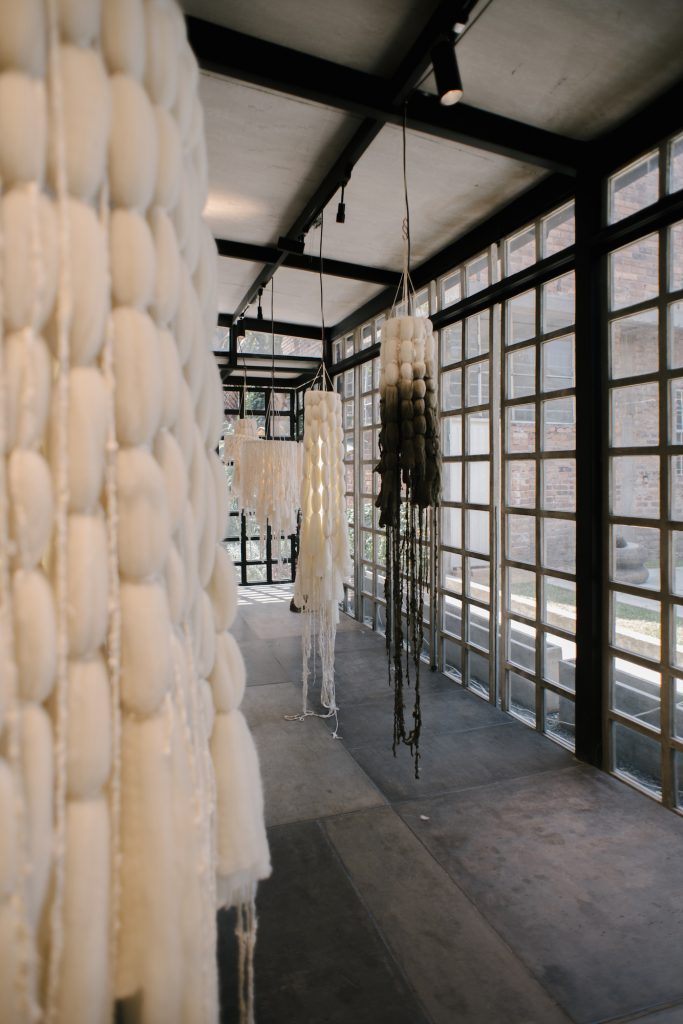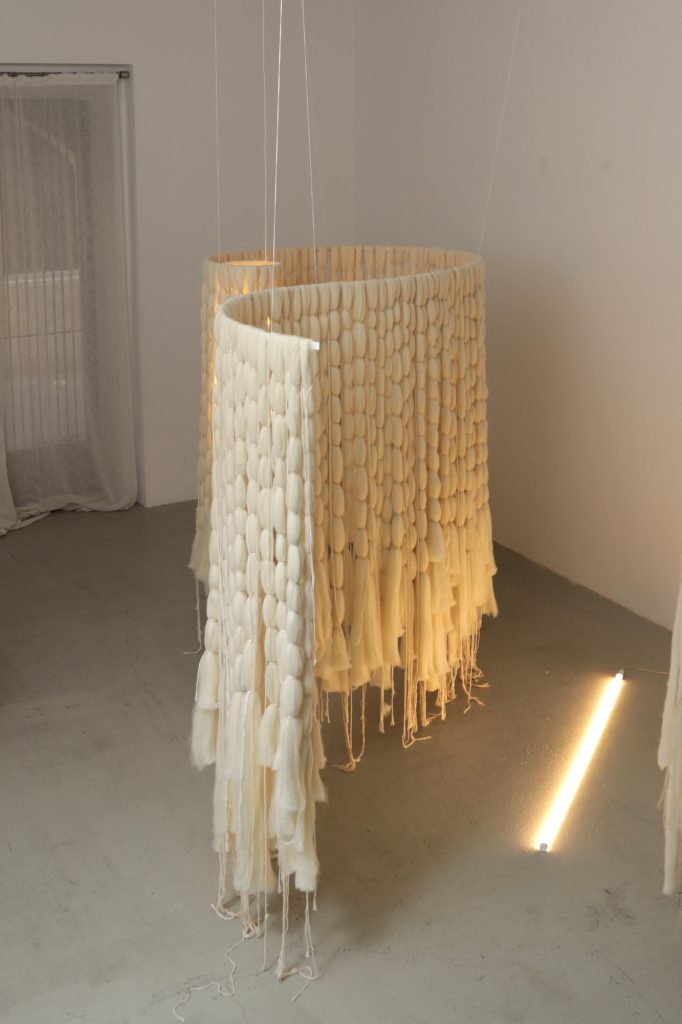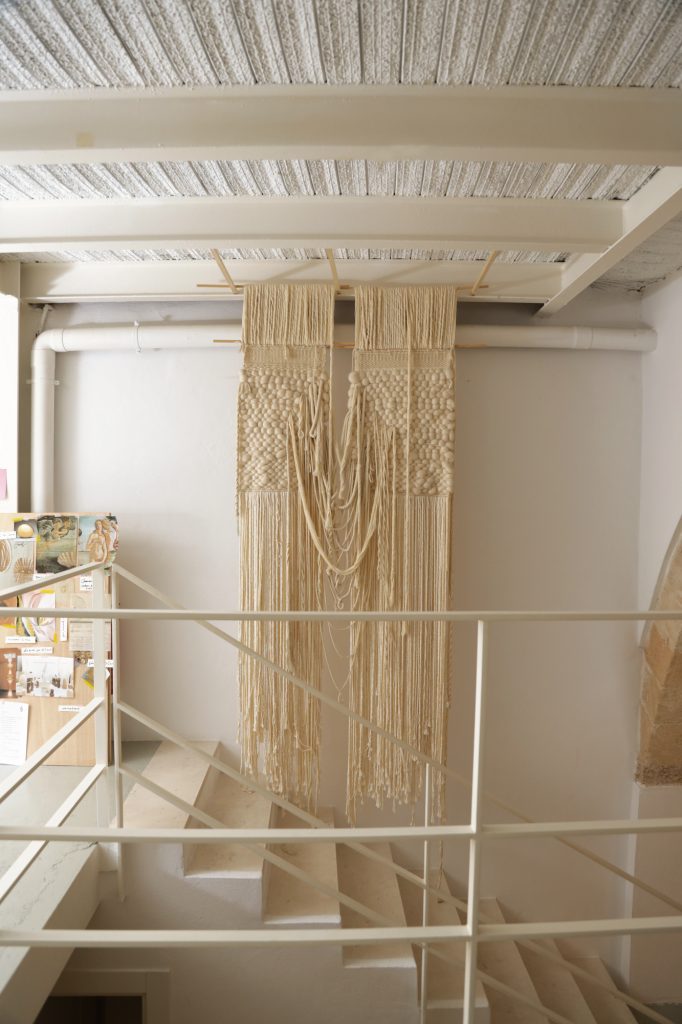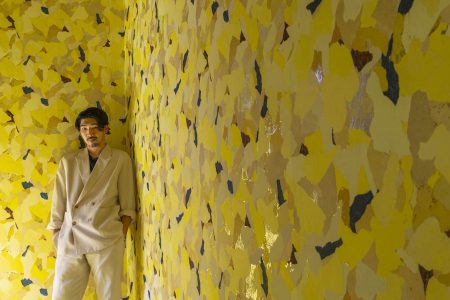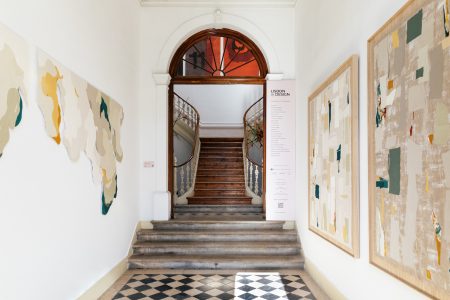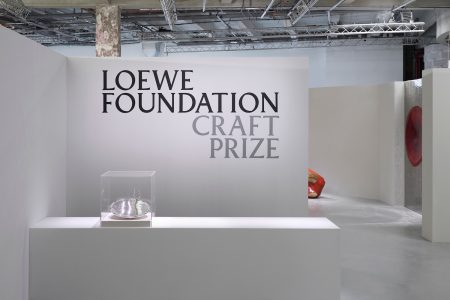Sylvia Sánchez Montoya: Tactile Connections
“I see my quest as building emotional connections with objects as a strategy for sustainability,” writes Mallorca-based artist Sylvia Sánchez Montoya. TLmag spoke to Montoya about her work, including her series titled Moiras and her recent performance and exhibition of this work in Colombia.
Born in Colombia, Sylvia Sánchez Montoya is a multi-talented creative who lived and worked in Paris, Bógota and Barcelona as consultant and art director in the fashion and luxury sectors before launching her own knitwear brand, Warmi, which was inspired by the rich textile traditions in her home country. Moving to Mallorca in 2020 led her to start focusing more on her own artwork, finding connection again through textiles and their tactile and ancestral qualities. Her recent series, Moiras, uses thick raw wool that is immersed in the elements, each piece slowly transforming through time. Many pieces are both artwork and functional object, such as a lamp or room divider, for example, freeing any boundaries between art, design, textile and our connection to the landscape.
TLmag: When did you first connect with textiles and start to feel that the language and action of weaving was something you wanted to do?
Sylvia Sánchez Montoya: I’ve been weaving since my childhood. My mom and her friends were in their hippie days and I remember spending whole afternoons with them making looms out of virgin wool; a smell that is my Proustian Madeleine. My aunts taught me to knit XXL jumpers and dresses for my Barbies and later I started doing (very) experimental clothes for me too. But it was only when I was living in Paris, working as an art director and trendhunter, that I decided to create a knitwear brand and start exploring my language through threads.
TLmag: This was your own line of knitwear called Warmi? Would you tell us about this experience?
S.S.M.: After five years of working as a consultant, I got to a point where I needed to go back to making things, and to reconnect with my home country, its people and traditions. Warmi was born from the idea of creating contemporary high-fashion knitwear, made slowly by women artisans in Colombia, preserving ancestral savoir-faire, while generating employment in rural areas.
Warmi means ‘woman’ in Quechua, one of the last indigenous living languages in South America, and I wanted to give visibility to women behind the manufacturing of the pieces. Each garment bore the name of the artisan who had woven it, the hours worked, the techniques used, the material, etc. This linked to a rudimentary website that told the life story of each woman.
The project was successful; winning design contests and selling through prestigious multi-brand stores such as Opening Ceremony in Tokyo and Le Bon Marché in Paris. However, the rapid pace of the fashion industry became overwhelming for me as a creator. I realized the need to reconnect with my authentic and artistic self, prompting me to put the project on hold after five years. My newest project, Moiras, represents a continuation of Warmi, albeit from a different perspective.
TLmag: Moiras is named after the weaver goddesses from Greek mythology. Can you talk briefly about the meaning behind this name?
S.S.M.: The Moiras were the weaver goddesses of the fate of mortals in Greek mythology embodied by three sisters; Clotho spun the strand of the newborn’s life; Láquesis turned the spindle, tying and winding the threads and distributing the fate; finally, Atropos, the oldest of the three, cut with her scissors the thread determining the end of life and the beginning of the next. My Moiras are woven sculptures with an irregular warp of noble threads; living matter that is transformed through contact with the environment reminding us of the evanescence of things.
Each Moiras series is made with local materials from the different places I work from. They are travelling cultural artefacts; paying homage to local materials and their interaction with the environment. The Moiras invite us to touch them, to cross them, to inhabit them; and it is through that interaction that they are completed. So, they breathe, they swell, they curl, tangle, fray, degrade; and as they age, they become more beautiful and even more alive.
TLmag: Moiras use a mix of overstock textiles from fabric companies and yarns sourced from the island and Catalunya. Why these materials? What do they mean for you?
S.S.M.: I perceive fibre as the essence and synthesis of a territory. Working with materials that originate and thrive in a particular place fosters a profound connection among the land, the people involved in their production, myself as the artist, and the final user. Fibres encapsulate rich content, to the extent that at times, I feel they communicate through me. It’s somewhat metaphysical (I’m aware!), but that’s how I experience it.
TLmag: Tell us a bit more about the process of making Moiras. When they are finished, you wash them in the sea and lay them in the sun to take on natural elements and in this way, are part of the earth, and will reflect a natural state of weathering and transformation….
S.S.M.: I enjoy subjecting the pieces to interaction with the environment and human touch as part of the finishing process. I also believe a piece that leaves my studio not completely finished, its completeness takes place in the final places they live. In my latest series, Moiras Edicion Colombia, I aimed to amplify the concept of transformation by exposing the pieces to the four elements as a catalyst for material transformation. Water: submerge and baptise the Moira in sacred waters of the Paramo de Chingaza. Air: drag and impregnate the Moira of the vegetative mantle to evoke a Chypre of Paramo. The Chypre is a category in perfumery whose composition would be inspired in grazing in the Mediterranean; where the fragrances of lavender, rosemary or fennel are mixed with sheep wool musk during the transhumance of the herds. Earth: embed and dye with coca leaf powder, in collaboration with Pajarita Caucana. Re-appropriating our plants to build new uses and new narratives. Fire: Immortalise the decomposition of matter just at the point of disappearance.
TLmag: Can you explain a bit more about this statement on your website: “Laboratory for creation of embodied things that explore our relationship with the material culture.”?
S.S.M.: I’ve come to realise that the common thread running through all my projects, from Warmi to Moiras and even in my consultancy practice, is the exploration of how we attribute value to material culture. As a maker and materialist myself, I believe we bear a responsibility for what we introduce into the world. I see my quest as building emotional connections with objects as a strategy for sustainability.
TLmag: What are some upcoming projects for you in 2024?
S.S.M.: I’ve recently returned from Colombia, where I created and showcased my Moiras Edicion Colombia. I’m currently working on a second exhibition there later this year. Additionally, I’m initiating a series of interventions in my studio in Mallorca, where I invite powerful female artists to collaborate, fostering a dynamic dialogue between our practices. The first collaboration was with Claire O’keefe and it took place at the end of March.
@sylvia_smm
